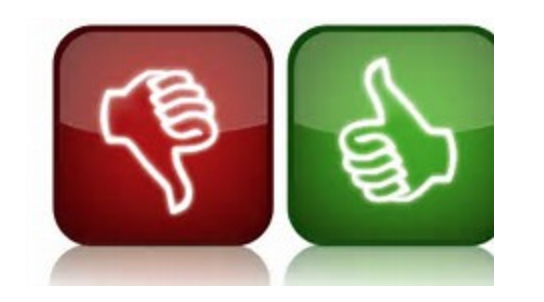While that convergence is nascent and new to many, it certainly has captured the attention of organizations large and small.

Source: GoGraph
First, here are some definitions from our friends at Wikipedia.
IoT is the inter-networking of physical devices, vehicles (also referred to as "connected devices" and "smart devices"), buildings, and other items. These items are embedded with electronics, software, sensors, actuators, and network connectivity that enable these objects to collect and exchange data.
IoT enables (through the capture of data) the physical world to be digitized. IoT allows objects to be sensed or controlled remotely across existing network infrastructure by creating opportunities for more direct integration of the physical world into computer-based systems.
This integration results in improved efficiency, accuracy, and economic benefit. In addition, integration reduces human intervention. Each thing is uniquely identifiable through its embedded computing system but can interoperate within the existing internet infrastructure.
A
blockchain, on the other hand, is a distributed database that maintains a continuously growing list of records called blocks, which are secured from tampering and revision. Each block contains a timestamp and a link to a previous block. By design, blockchains are inherently resistant to modification of the data.
Once recorded, the data in a block cannot be altered retroactively. Through the use of a peer-to-peer network and a distributed timestamping server, a blockchain database is managed autonomously. Blockchains are "an open, distributed ledger that can record transactions between two parties efficiently, verifiable, and permanent. The ledger itself can also be programmed to trigger transactions automatically."
In other words, blockchain is a new way for business entities to collaborate with less friction and higher trust. It is a new way of doing transaction processing.
IoT brings a real-time dimension to the blockchain. It brings the natural world into the digital world. The disruptive and revolutionary transaction system of blockchain in combination with IoT brings a trusted and transparent perspective of what's going on physically. IoT can analyze things from temperatures of containers to jet engine performance.
IoT is digitalizing the physical world and integrating with that business network through blockchain's trustworthy representation of digital information and transactions. How are we certain, for example, that the temperature-recording devices are authentic devices?
IoT captures that data down to the digital ID on the thermometer, and blockchain ensures it is not tampered with. IoT's participation in the blockchain ensures a level of credibility that wouldn't be there otherwise.
The Blockchain-IoT Consortium launch showcased many new applications and organizations. Examples from the article "
Day of Demos: Blockchain-IoT Consortium Kicks Off with Use Cases Aplenty" include:
- Slock.it's Share and Charge project built autonomous electric car charging stations using Raspberry Pis. The effort also allows owners of charging stations to share their energy reserves with others.
- Oaken demoed its tollbooth proof-of-concept, which uses IPFA and Ethereum to allow Tesla cars to pay automatically at toll booths. The project won first place at a United Arab Emirates-sponsored blockchain hack.
- Bosch demoed its blockchain-based system to prevent odometer fraud. According to Timo Gessmann, director of Bosch IoT Lab, nearly one in three cars' odometers are manipulated before they are sold. With a lower number of miles on a car, both individuals and car dealers can sell a vehicle for a higher price.
- Filament also demoed a sharing economy handheld drill. The drill contained what Filament calls "the path"—a small, Bluetooth-enabled device with a built-in contract that allows people to lease the tool for a specific amount of time. When someone signs a digital lease, the information is sent to the drill, and an LED light on the tool lights up green indicating it's ready for use. When the lease expires, the drill ceases to function.
Meanwhile, IBM is stepping up with the Watson IoT&trade Platform. The platform enables IoT devices to send data to private blockchain ledgers for inclusion in shared transactions with tamper-resistant records.
The distributed replication of IBM Blockchain enables access and supplies IoT data without the need for central control and management. All business partners can verify each transaction, preventing disputes and ensuring each partner is held accountable for their roles in the overall transaction.
Given security and privacy issues with IoT, expect other vendors to jump in.
This article was originally published on
LinkedIn.
Marian Cook is currently a solutions principal for Slalom Consulting, as well as the head facilitator for MIT's blockchain certification course and a strategic advisor to the Chicago Blockchain Center. Immediately prior, she was the chief strategy officer for Innovation and Technology for the State of Illinois, having moved from the private sector to public service in 2015.
Opinions expressed by the author are not necessarily those of WITI.
Are you interested in boosting your career, personal development, networking, and giving back? If so, WITI is the place for you! Become a WITI Member and receive exclusive access to attend our WITI members-only events, webinars, online coaching circles, find mentorship opportunities (become a mentor; find a mentor), and more!
Founded in 1989, WITI (Women in Technology International) is committed to empowering innovators, inspiring future generations and building inclusive cultures, worldwide. WITI is redefining the way women and men collaborate to drive innovation and business growth and is helping corporate partners create and foster gender inclusive cultures. A leading authority of women in technology and business, WITI has been advocating and recognizing women's contributions in the industry for more than 30 years.
The organization delivers leading edge programs and platforms for individuals and companies -- designed to empower professionals, boost competitiveness and cultivate partnerships, globally. WITI’s ecosystem includes more than a million professionals, 60 networks and 300 partners, worldwide.
WITI's Mission
Empower Innovators.
Inspire Future Generations.
Build Inclusive Cultures.
As Part of That Mission WITI Is Committed to
Building Your Network.
Building Your Brand.
Advancing Your Career.


Comments